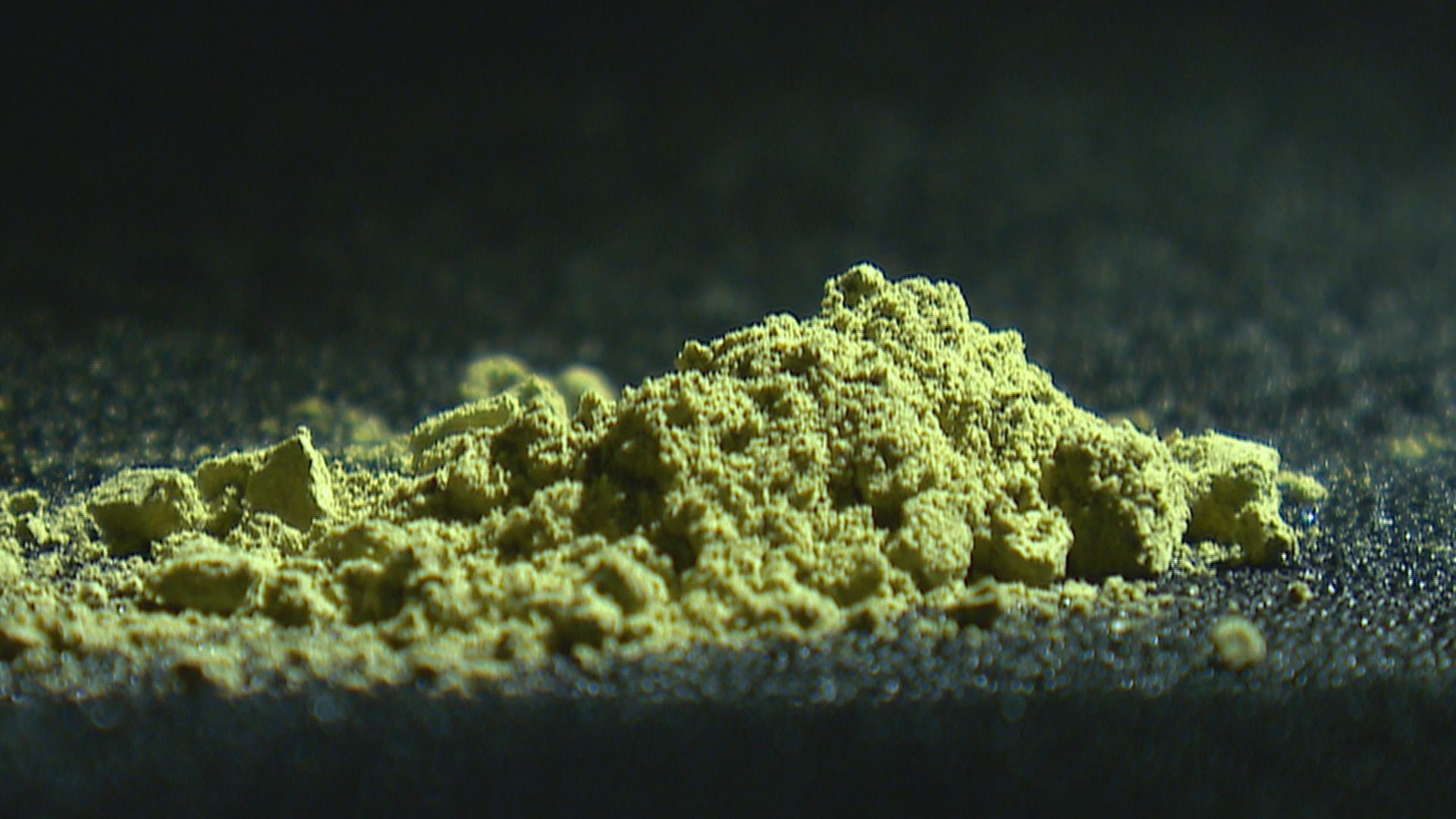The Kratom Controversy: Herbal supplement or dangerous drug?
Kratom is being promoted as a way to get addicts off heroin, pain pills and even giving people relief from PTSD.

You probably never heard of Kratom.
It’s a tree that grows in South East Asian countries like Thailand and Malaysia. Its leaves can be chewed, dried and crushed into a powder or brewed into tea.
Kratom is being promoted as a way to get addicts off heroin, pain pills and even giving people relief from PTSD.
RELATED: FDA warns Kratom has deadly risks
But grieving parents, who have lost love ones while taking Kratom, said it’s a dangerous unregulated substance.
The medicinal herb Kratom is legal in most of the country. It’s not an opioid, but it acts like one.
In low doses, it’s a stimulant and in high doses it acts like a sedative.
RELATED: How to talk to your kids about opioids
WUSA9 talked with people from around the world who swear by it. They say Kratom has helped them get off heroin and opiates but we also talked to others who wished they’d never heard of it.
Officials ruled Kratom as the cause of the death in these three cases.


Joy Atencio’s son, Guy Garcia died in 2013.The 36-year old husband and new father had a very serious grand mal seizure in front of his mom and his young son. He was rushed to the hospital, but was declared brain dead.
Garcia’s official cause of death was apparent acute mitragynine toxicity.
Mitragynine is the main organic compound in Kratom.


On July 7, 2017, Laura Lamon’s 27 year-old son Christopher Waldron died in Tampa, FL.
“He was my best friend. The love of my life. He was my only child,” said Lamon. “What I like to say is that Christopher did what would make him feel better.”
Christopher’s autopsy showed a couple of things: a thyroid and heart condition, a muscle relaxer, a prescription antidepressant and Kratom in his system.
With drugs and Kratom in his body, we wanted to know how Christopher’s cause of death was determined.
WUSA9 Special Assignment Producer Erin Spaht spoke with Julie Pearson, chief forensic toxicologist in the Hillsborough County Medical Examiner’s office.
Pearson said the prescription drug interactions didn’t cause Christopher’s death, it was the very high level of Kratom in his blood that killed him.


On August 8, 2017, 27-year-old Sergeant Matthew Dana, from Tupper Lake, New York died.
Sgt. Dana’s official cause of death --“Hemorrhagic Pulmonary Edema due to Kratom overdose.”
Franklin County Coroner, Shawn Stuart ruled Dana’s death accidental.
According to the American Kratom Association, there are more than three million Kratom users in the United States. One of those users is Tim Davis, of Baltimore, Md.
We spent a day with Davis to learn more about Kratom is helping him.
“You start off just being in pain and then you get sucked into the whole opioid epidemic,” said Davis.
Davis credits Kratom with getting him off prescription pain pills prescribed to him for back pain.
The Kratom controversy has been brewing. You see around this time last year, the Drug Enforcement Agency said it was going to ban Kratom basically putting it in the same drug category as hard-core drugs like heroin, ecstasy and LSD.
And when that news broke, it sparked outrage and Kratom supporters fought back in a big way: 23,000 people sent comments to the DEA urging the feds to keep kratom legal and 140,000 people signed a White House petition and even Congress got involved.
And within a few weeks, the DEA halted its efforts to ban Kratom. That was good news for Kratom supporters like Tim Davis.
“That is what this fight is about. You know, keeping this plant here,” said Davis.


Davis is a photographer, a YouTube blogger and daily Kratom user.
“Me being a father, I have a job, I have so much stuff that I need to do. I gotta get up you know. My kids want to play I can’t be in pain in bed, I was like hey, do I take these pain pills and be a better person,” said Davis.
Davis said the first time he took Kratom it “took all the pain away, it took all the feelings from the pills away.”
“I felt like myself again," he said.
Davis has documented his Kratom journey from day one on his YouTube channel.
“It actually worked so good that I was waiting for something bad to happen,” said Davis. Davis said nothing bad has happened.
WUSA9 wanted to sit down with the American Kratom Association, but it would only agree to a phone interview.
“We think Kratom by itself is safe,” said Dave Herman, Chairman of the Board for the American Kratom Association.
“In normal activity, it’s non-harmful and has a low potential for both abuse and addiction,” said Herman.
Our conversation continued and we talked with Herman about the two recent deaths.
The Kratom Association’s position is that officials in both cases rushed to judgment and basically, they got the causes of death wrong.
It said in Christopher Waldron’s case, the prescription drugs in his body were at an almost toxic level, they shouldn’t have been taken together and that Kratom did not cause his death.
Sgt. Matthew Dana’s case is a little trickier. Only Matt’s family can see his autopsy report. Not the public, not the Kratom Association and not the media, even under an open records request.
Because WUSA9 could not review Sgt. Dana’s autopsy report, WUSA9 Producer Erin Spaht spoke with Franklin County Medical Examiner Dr. George Vargas and Franklin County Coroner Shawn Stuart. Both worked on Sgt. Dana’s case.
Vargas and Stuart both said an extensive toxicity screen was done and that nothing was present in his blood except Kratom.
Our conversation with the Kratom Association continued -- WUSA9 asked Herman if Kratom can be dangerous.
“I don’t know anything that can’t be dangerous but historically it has not been," Herman said.
Addiction Psychiatrist Dr. George Kolodner is treating a couple of patients for Kratom addiction.
“We know there is some danger attached to it," Dr. Kolodner said. "When we see people taking it, they act like opioid addicts.”
“You can get addicted to it. And it's not highly addictive, but it is addictive and it's still legal which makes it attractive to some people,” said Dr. Kolodner.
Kratom’s price also makes it attractive to people. An ounce of Kratom can cost anywhere between $10 and $40.


Kratom is banned in more than a dozen countries. It’s illegal in Alabama, Arkansas, Tennessee, Indiana, Wisconsin and Vermont. It’s also banned in San Diego, CA, and Sarasota, FL.
In DC, the maximum penalty for possessing a Schedule 1 controlled substance like Kratom is 180 days incarceration or $1,000 fine or both. The maximum penalty for distribution Kratom is 30 years incarceration or $75,000 fine or both.
On the federal side of the Kratom controversy, the Drug Enforcement Administration said from 2014 to 2016, 15 deaths were linked to Kratom worldwide.
The DEA wouldn’t do an interview with WUSA9 because it said Kratom “…is not regulated at this time and so is not subject to DEA enforcement."
But the DEA said “Kratom continues to be a drug of concern.”
The Food and Drug Administration is researching Kratom for its medicinal properties and its potential for abuse, but because of that study the FDA wouldn’t do an interview with us. The FDA also would not tell WUSA9 when its Kratom study would be wrapped up.
Statement from Daniel Fabricant, Ph.D., President and CEO of the Natural Products Association:
“Kratom has been a public health target for almost five years, and its surging growth in use and availability is an unfortunate but real example of the federal government’s unwillingness to use existing authorities to enforce the law.
“Kratom is not an herbal supplement: it is addictive, harmful, and worse, it may be contributing to America’s opiate epidemic. We are eager to work with the authorities and our members to help turn the tide against Kratom and ensure that it is seen as what it is: a dangerous narcotic that has no place in health or wellness.”
WUSA9 would like to thank its TEGNA stations that contributed to this report: KUSA Producer Katie Wilcox, KUSA Photographer Manny Sotelo, WTSP Reporter Beau Zimmer and WTSP Photographer Angela Clooney
